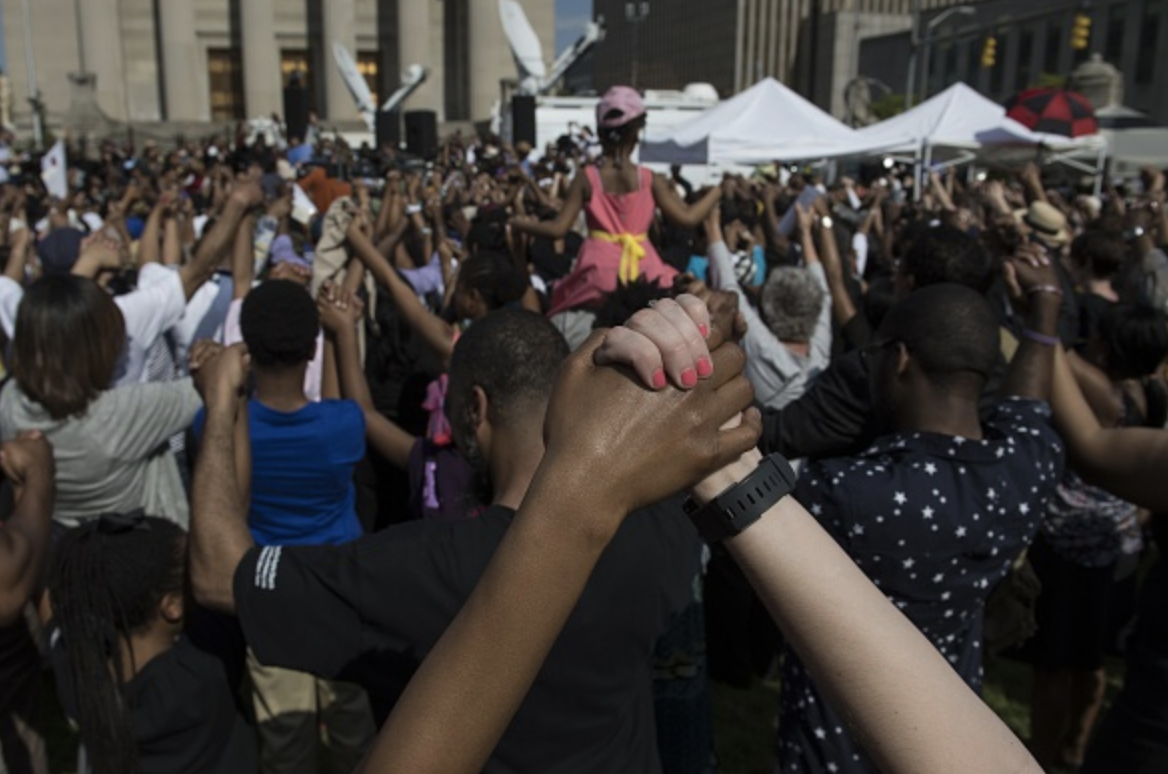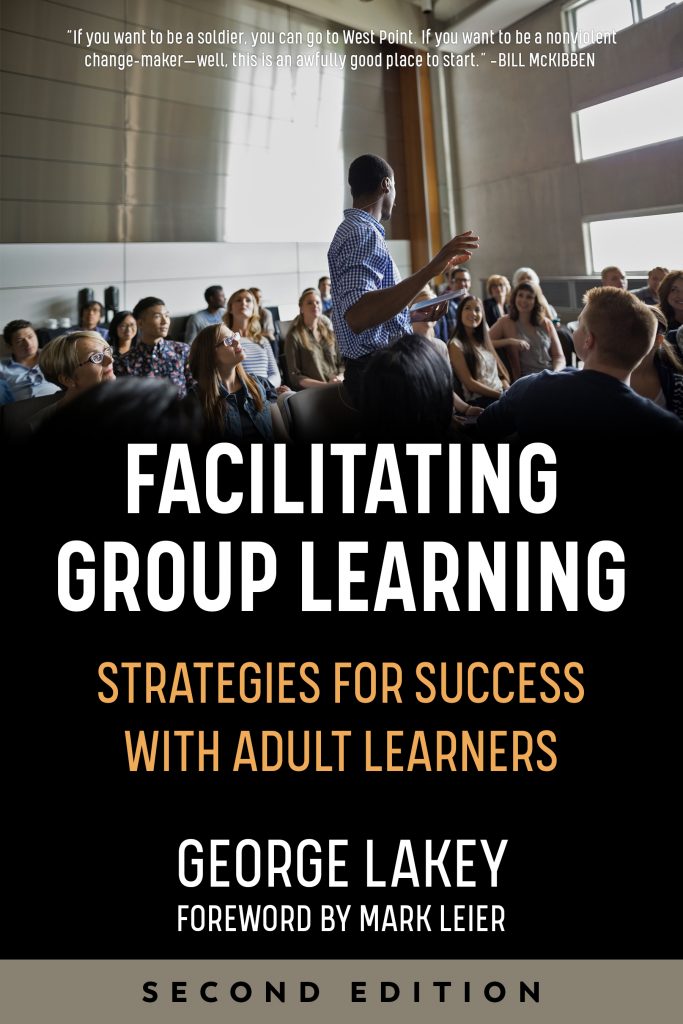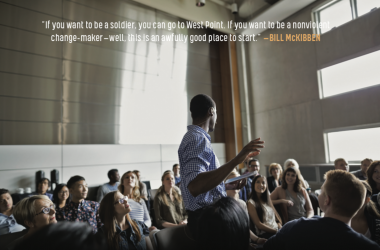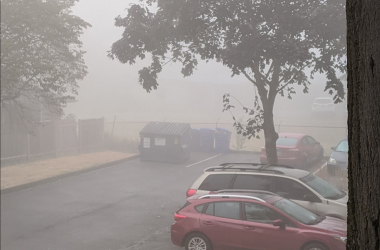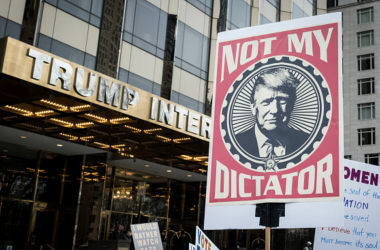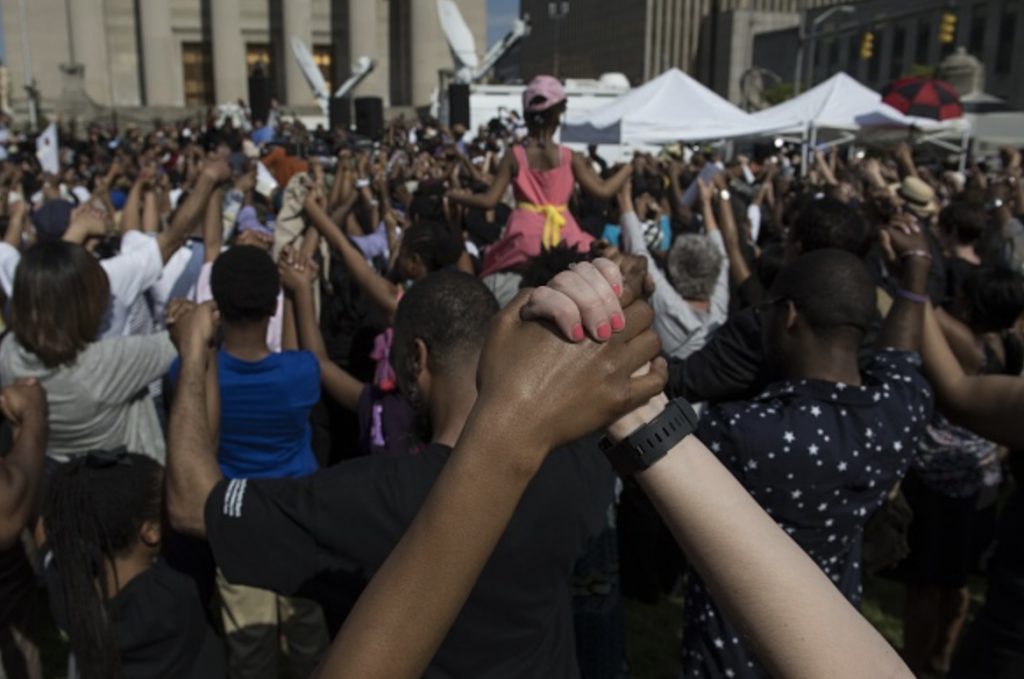
By George Lakey
Waging NonViolence
June 1st, 2015
A pro-training culture moves beyond the language of correction and control, toward the goal of liberatory empowerment.
Editor’s note: In the wake of nationwide protests demanding justice for George Floyd, we are sharing some of our previous coverage about how to end systematic racism in America. For more, see this collection of stories from our archive.
It’s not a new idea to access training as a way to strengthen white people’s ability to be allies of people of color. In the 1970’s some of us brought to the world of direct action training a session designed to support everyone to move beyond racial and gender oppression. For example, during an all-day training before a planned action one of the modules would address oppressive dynamics that show up among activists.
Not a bad idea, but I for one didn’t understand then how deeply racism and other oppressions were embedded within us. It turned out that the road to liberation would be a long one, not only for the larger society where oppression is actively supported by the economic structure, but even among white social change groups deeply committed to justice.
Since then, a group of activist trainers evolved “direct education,” an updated version of popular education that brings two additional resources to training: state-of-the-art group dynamics and re-invented learning tools that formerly had a class bias.
For me, as a member of a largely white climate justice group, the good news is direct education helps us grow beyond white supremacy. For me, personally, as a white person in a majority African American family, the resource also supports more integration in my life.
Grab the opportunities
At our best, activists stay nimble. We scan the environment looking for lemons that can be turned into lemonade, noting that our society gives us lots of lemons. One way that class-unaware anti-oppression work has slowed whites down is by stimulating blame and shame, reducing the self-respect we need to stay nimble and do our best work.
The recent series of outrages from Ferguson to Baltimore could have provoked another guilt-bath in the group I’m part of, Earth Quaker Action Team, or EQAT. But, as a result of learning direct education, we could respond freshly. When an African American staff member asked for a leave of absence to respond to a request for his help in Ferguson, EQAT supported him to go immediately, with his salary in hand, while we took care not to make his mission a fundraising ploy for the organization.
Baltimore erupted with another racist killing shortly before an EQAT monthly meeting. At the meeting we placed it first on the agenda. We asked individuals in groups of three (so as to foster intimacy and confidentiality) to share their inner feelings aroused by the stormy events. I watched the body language in those sharing groups, which said it all: vulnerable and passionate sharing with very little of the defensiveness shown by angry outbursts against “those (other) racist white people.”
Later in the meeting, EQAT considered the proposal for a new campaign that would frequently put our members in cross-race, cross-class situations. This could be another five-year commitment, as was the campaign that won EQAT’s first victory. White middle-class members acknowledged it would pull them out of their comfort zones. The group agreed to continue to research the proposal.
Whether or not EQAT finally chooses this particular campaign idea, I was struck by the moment’s rarity in a largely white, largely middle-class climate justice activism. Decades of anti-racist work among progressives has not put that movement or most others in a new place. If the old anti-racism methods of blaming and shaming worked, I would still be doing them, but those methods have resulted in defensive reactivity and walking on eggshells. Too many graduates of political correctness training have learned to disempower themselves and their comrades, often through second-guessing. Ironically, such outcomes make white people less effective allies of movements of color.
Continuity matters for working against racism
EQAT’s experiment has been to partner with Training for Change, or TFC, the internationally-known group that invented direct education. From the start, TFC facilitated strategy sessions in which EQAT learned to create six-to-nine month action “arcs” that escalated our campaign, successfully pressuring PNC Bank to give up financing mountaintop removal coal mining in Appalachia. TFC also facilitated EQAT meetings where we saw the chance, with help, to push beyond the tight boundaries of middle-classness and become more “real,” and therefore more diversity-friendly.
EQAT members attended TFC train-the-trainer workshops where we learned group process skills that made our meetings more lively and welcoming, processes that supported attenders to be more authentic. Nearly all of the 125 actions that EQAT organized to achieve its victory were preceded by a training that increased skills and boldness, and at the same time encouraged teamwork and mutual awareness and support. Further, nearly all the actions were followed by a debriefing, in which participants were encouraged to claim their courage and acknowledge their mistakes.
Our pro-training organizational culture is all about “the learning curve” and “being on our edge,” so getting help from outside trainers is to us a no-brainer. Our group is evolving a pro-training culture that supports flexibility, making mistakes, being vulnerable, expressing courage, showing affirmation instead of judgment, and making lemonade out of those lemons.
Significantly, the direct education training tools TFC is teaching us address many of the characteristic descriptions I’ve heard from people of color and working-class people who feel distant from white middle-class activists: arrogant, cold, defensive, reluctant to give authentic support, in their heads, afraid to be real and spontaneous.
Within a pro-training culture, working on racism is a very different process from my early experience in the movement. Using direct education for movement-building increases the ability to be effective white allies even when it omits the special words of anti-racist discourse. A liberatory organizational culture downplays the correct language and trendy abstractions that academics love so much.
My own working-class background taught me that what counts in an ally has nothing to do with knowing what “intersectionality” means. What matters is knowing how to express the spirit of solidarity. My observation is that many college-trained white people who use the word “intersectionality” have trouble expressing solidarity, even with their fellow white people. In fact, the reason I left the training world of anti-racism was because I saw language being used as one more technique of middle-class correction and control, a use of language that is in direct contradiction to the goal of liberatory empowerment.
As EQAT moved into our process of discerning its next campaign we decided to become more explicit and invited a TFC trainer with deep experience supporting whites confronting racism to lead a workshop on that theme. Erika Thorne chose a simulation and other activities that generated many “a-ha’s” as we saw ourselves in fresh ways. Her facilitation built a container that supported a loud “storm” where white members could express passionate disagreement, a breakthrough for EQAT in diversifying its communication and conflict styles. The experience helps prepare group members for the rough-and-tumble that might show up as EQAT works in coalitions across class and race lines.
Erika followed up by working with a small group of EQAT members to strengthen cross-cultural conflict-waging skills. All groups have conflicts within them, and culturally homogeneous groups endorse one or another style for dealing with them: avoidance, emotionally-rich argument, rational dialogue, physical contest, mediation, hierarchical decision, and so on. Group members often have a loyalty to one or two styles, shrink from those out of their comfort zone, and reflexively label others as immoral. A living revolution invites white middle-class people to broaden their subconsciously-formed ways of handling conflict and develop a larger repertoire of skills. That will equip us to “play well with others,” forming robust coalitions with sufficient unity to overthrow the dominance of the economic elite.
Other groups may have other growing edges for their anti-racism work, but my guess is that all will find that their beneficial changes are accelerated by direct education training. For EQAT the opportunity is to stretch our organizational culture with a wider range of conflict styles. If we succeed it will be a win/win/win: for the larger movement, for our members’ fuller expression of authenticity, and for the racial and cross-class welcome mat of EQAT itself.
George Lakey has been active in direct action campaigns for over six decades. Recently retired from Swarthmore College, he was first arrested in the civil rights movement and most recently in the climate justice movement. He has facilitated 1,500 workshops on five continents and led activist projects on local, national and international levels. His 10 books and many articles reflect his social research into change on community and societal levels. His newest books are “Viking Economics: How the Scandinavians got it right and how we can, too” (2016) and “How We Win: A Guide to Nonviolent Direct Action Campaigning” (2018.)

